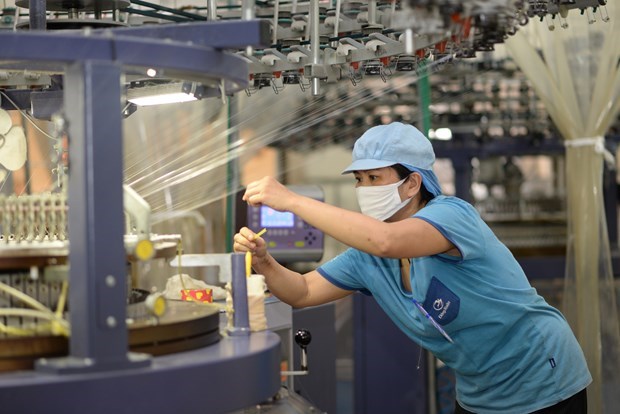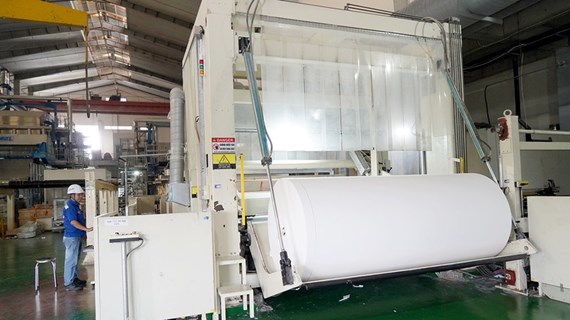Enterprises boost production, recover post-COVID-19
 Enterprises strengthen production, overcome difficulties post-COVID -19. (Photo: Vietnamplus)
Enterprises strengthen production, overcome difficulties post-COVID -19. (Photo: Vietnamplus)Effective COVID-19 pandemic control works have created conditions for enterprises to boost production and business activities and increase exports.
Overcome difficulties
According to the Ministry of Trade and Industry, Vietnam’s export turnover in May 2020 was estimated at 18.5 billion USD, up 5.2 percent compared to April.
|
Statistics show that the export turnover of the domestically-invested sector was estimated at 6.6 billion USD, up 1.1 percent compared to April 2020, while the export of foreign direct invested sector was up 7.6 percent in the same period, reaching 11.9 billion USD (including crude oil). |
According to the Ministry of Industry and Trade, computers, electronic products and components ranked first in export turnover, reaching 3.2 billion USD, up 5.4 percent over the previous month and up 9 percent compared to the same period in 2019.
Export turnover of machinery, equipment, tools and spare parts also increased by 16.2 percent compared to May 2019, reaching 1.75 billion USD.
According to the Ministry of Industry and Trade, Vietnam's rice export in May 2020 rose by 47 percent in volume and 55.3 percent in value compared to April 2020.
Rice export price of Vietnam in May 2020 showed progress, also increasing with the average price of 527 USD per ton (up 5.6 percent compared to April 2020 and 21.4 percent over the same period in 2019).
For the first 5 months of 2020, Vietnam's export turnover was estimated at 99.36 billion USD, down 1.7 percent compared to the same period in 2019.
The main cause of Vietnam's trade decline was due to the strong global impact of the COVID-19 pandemic, especially in Vietnam's leading trading partners, such as the EU, USA, Japan and ASEAN.
Focusing on solutions for export
According to Import and Export Department (Ministry of Industry and Trade), in May, the country spent about 19.4 billion USD to import goods for production and consumption, up 4.7 percent on the previous month. Generally, in the first five months, the import turnover of the country was estimated at 97.48 billion USD, down 3.8 percent compared to the same period last year, in which, domestic enterprises imported about 41.9 billion USD, while FDI enterprises imported about 55.54 billion USD.
The department also revealed that, the group of goods that need to be imported, including raw materials for domestic production in May, increased by 7.7 percent compared to April 2020, estimated at 17.32 billion USD. In the first 5 months, the import turnover of this group was estimated at 86.18 billion USD, accounting for 88.4 percent of the total import turnover.
Vietnam still imports most goods from China. In the first five months, the country spent 28.8 billion USD to import from this neighbouring market, followed by the Republic of Korea and ASEAN with 17.27 billion USD and 11.79 billion USD, respectively.
After the first five months of this year, the country’s trade surplus was 1.88 billion USD with foreign direct investment enterprise groups seeing a trade surplus of 10.52 billion USD, while domestic enterprise groups posting a trade deficit of 8.64 billion USD.
 (Enterprises apply cutting edge technology to increase productivity. Photo: Vietnamplus)
(Enterprises apply cutting edge technology to increase productivity. Photo: Vietnamplus)Reviewing the recent pandemic period, General Director of the Vietnam Textile and Garment Group Le Tien Truong said the decline of Vietnam's garment and textile compared to competing countries such as China, India, and Bangladesh equal to approximately 50 percent, this showed that the Government's effective control of the disease and efforts of businesses have also limited the pandemic’s negative impacts on the market./.













